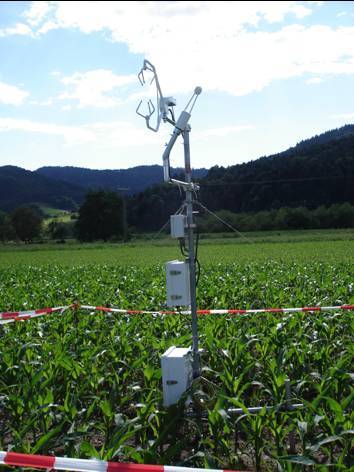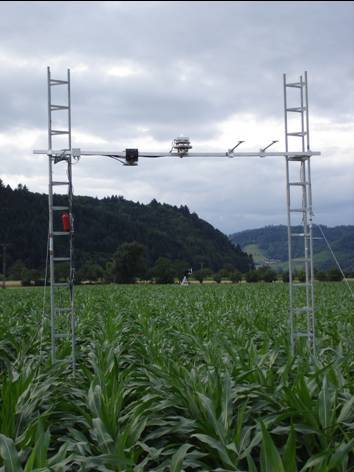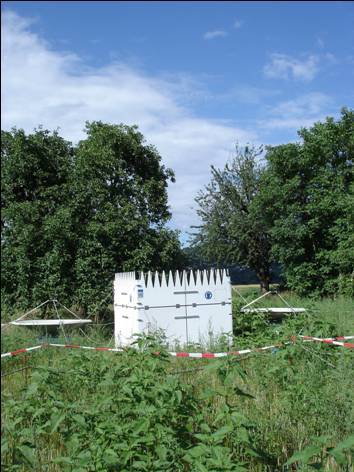Convective and Orographically-induced Precipitation Study (COPS): Energy balance measurments during COPS
COPS (SPP 1167)
From 06/2007 to 08/2007Experiment manager: Thomas Foken
Staff: Stefan Metzger, Rafael Eigenmann, Andrei Serafimovich, Lukas Siebicke, Katharina Köck (Staudt), Johannes Lüers, Johannes Olesch
The Convective and Orographically-induced Precipitation Study (COPS) was an international field campaign embedded within the German 6-year Priority Program SPP 1167 “Quantitative Precipitation Forecast PQP (Praecipitationis Quantitativae Predictio)” of the German Science Foundation (DFG). It was carried out from 1 June to 31 August 2007 in a low-mountain area in southwestern Germany and eastern France covering the Vosges Mountains, the Upper Rhine valley, the Black Forest and the Swabian Mountains. The campaign aimed to identify the physical and chemical processes responsible for the deficiencies in Quantitative Precipitation Forecast (QPF) in low-mountain regions by observing specific convective situations during Intensive Observation Periods (IOPs) with a synergy of meteorological instruments (e.g. radar and lidar systems, surface networks, aircraft, satellites etc.). A surface energy balance and turbulence network was also set up during COPS. Continuous surface flux and other surface micrometeorological data of the required high accuracy and quality were recorded, e.g. for the forcing and validation of the applied mesoscale models within COPS.
The network consisted of sixteen stations operated by five collaborating institutes. The measuring sites were mainly located in valleys (Murg, Kinzig and Rench valley) and on mountaintops (Hornisgrinde, Igelsberg) of the Black Forest and were characterized by different types of land use (mainly grassland and agricultural areas). The University of Bayreuth was responsible for the surface measurements in the Kinzig valley. At three sites (Fußbach, Fischerbach and Hagenbuch) in this valley, all components of the surface energy balance (surface turbulent fluxes, radiation and soill components) were measured. The eddy-covariance (EC) method was applied in order to obtain surface turbulent flux data of momentum, sensible and latent heat. Additionally, a modified Bowen ratio tower (to measure turbulent fluxes), a 9m profile mast (to measure the profile of wind speed, temperature and water vapor pressure) and a Sodar/RASS system (to measure vertical profiles of wind components and virtual temperature) were installed at Fußbach. More details about the set-up are given in the experiment documentation:
Experiment documentation (University of Bayreuth)
 |
 |
 |
Measurements at Fußbach, Kinzig valley, Black Forest; left: EC station over a maize field; middle: radiation measurements over the maize field; right: Sodar/RASS system
Homepage: https://www.uni-hohenheim.de/spp-iop/index.htm
Related links:
- Project: COPS (SPP 1167), DFG Fo 226/19-1 (SPP 1167), 226/23-1: Energy balance measurements during COPS (Convective and Orographically-induced Precipitation Study), turbulent fluxes and thermal convection in a valley
